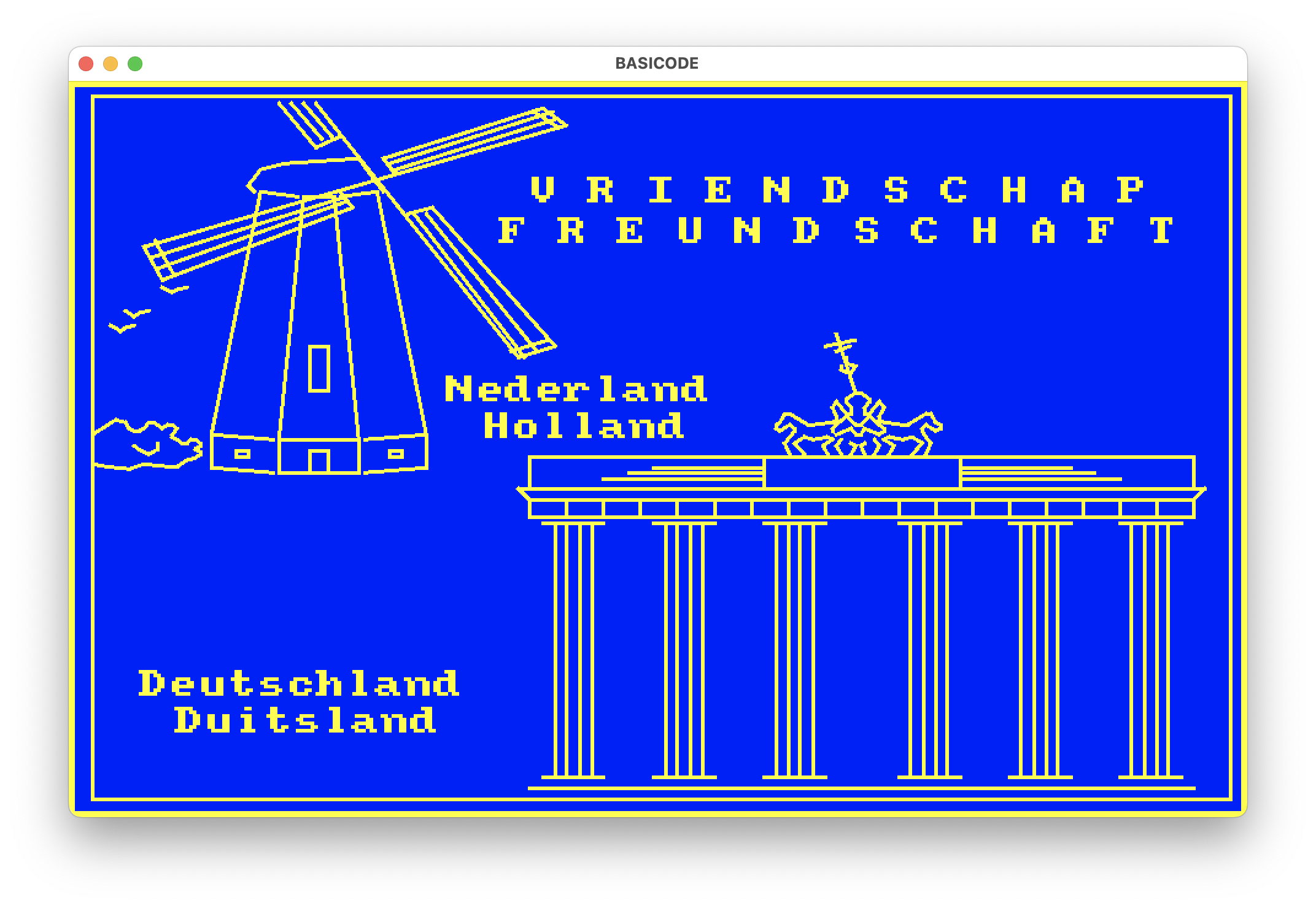BASICODE
You’ve probably never heard of BASICODE, even if you know one or two programming languages, and even if you know the BASIC programming language. I recently heard about it for the first time, and was surprised and pleased to hear that this existed.
BASICODE started when several nerds in the Netherlands wanted to exchange computer programs written in the BASIC programming language among themselves. Initially, it was a way to encode computer programs as sound, to store them on cassette tape. (This was very common before floppy disks, then CD-ROMs, then USB sticks became popular. If you know more than one of these, thank you.)
So far, so good, however these folks soon found out that being able to transfer code between machines wasn’t everything there was to it. The BASIC dialects on the different machines had different ideas of how to do graphics, sound, I/O, and so forth.
They decided to overcome this by defining a set of subroutines (callable with the common GOSUB statement) for these kinds of things, as well as a set of conventions for how code should be organised to be able to work with these subroutines. The routines would be implemented in the respective machines' native BASIC. These machine-specific implementations of the common standard were called BASCODER. Since BASIC used line numbers back then, one of the conventions said that the BASCODERs would reside in lines below 1000, and applications could start at that line only.
In other words, the BASICODE inventors defined an ABI of sorts, and built a set of virtual machines to support a platform-independent BASIC dialect. The interface included graphics, sound, and I/O. Sound familiar? I find it fascinating that this originated in the 8-bit home computing world, independently of contemporary developments like P-Code and Smalltalk.
Since I have a certain love for 8-bit computing (having learned programming on a Schneider PCW), I was of course interested in exploring BASICODE and the applications that people have built with it. For that, I needed to use the original hardware, install some kind of emulator, or run it in a browser. Neither of those options was particularly satisfying. Being a programming languages nerd, what could have been more likely than me setting out to build a BASICODE myself? So I did.
It's here, built in Java, and it's under the MIT licence.
The BASIC programming language interpreter is built using a grammar written in JavaCC. The interpreter is an AST interpreter. These are very easy to implement and understand, and don’t take much time to build. My objective with the whole thing is simplicity, not design perfection. (How about a sorry excuse for ugliness?)
The GUI is built using the basic Java features, AWT and Swing. I didn't want to include too many dependencies, to be honest. The parser generator aside.
The screen shot below is produced by an actual BASIC program running in the interpreter, producing output on the console. So cool.

Tags: the-nerdy-bit, hacking